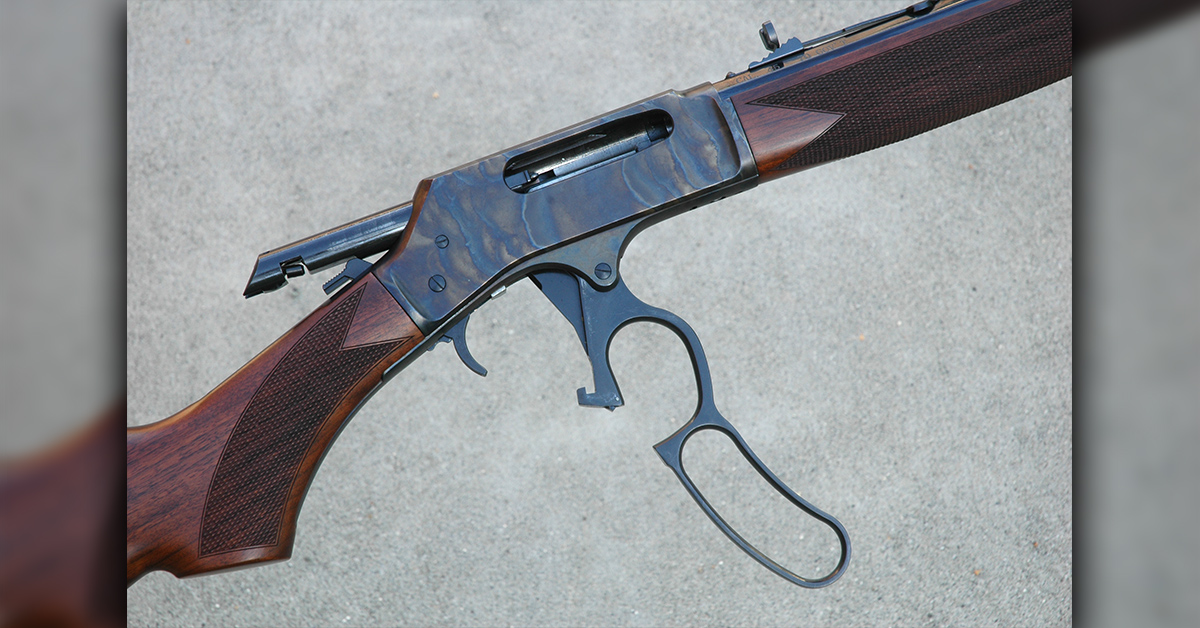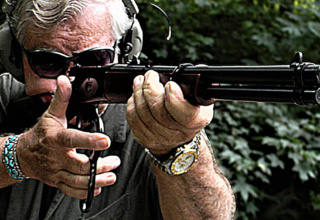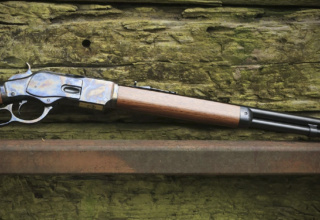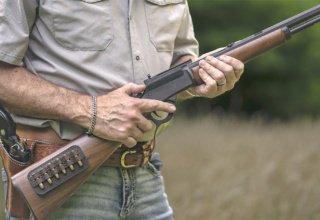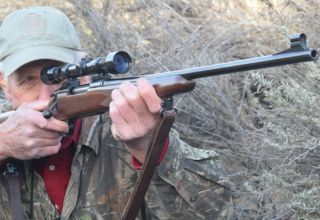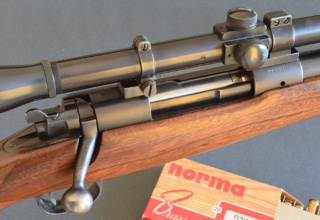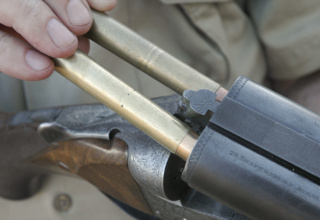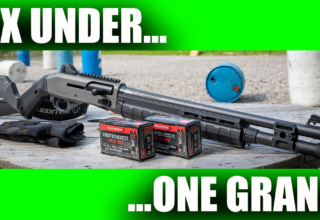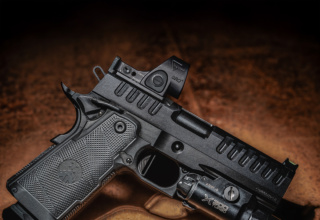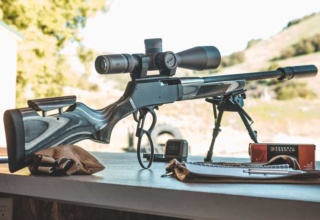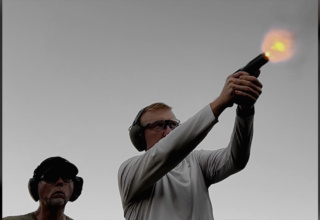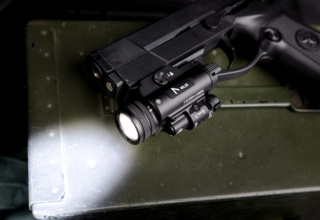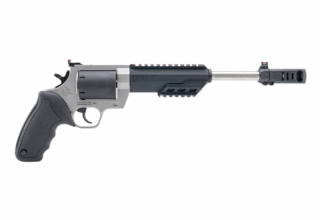The first was a problem child in 1849. None have the reach of bolt rifles. You still need one.
by Wayne van Zwoll
Peer long enough through powerful glass at mirage-bending distant steel and the world becomes lifeless. A pulse-check: watch John Wayne or Chuck Connors fan the lever of a Winchester carbine!
“… Where is the military genius [to] develop the capacities of this terrible engine – the exclusive use of which would enable any government … to rule the world?”
So, Oliver Winchester urged the Army to adopt the 15-shot Henry rifle. Little more than a decade had passed since 1849, when inventor Walter Hunt had developed his hollow-base “Rocket Ball” bullet, the powder inside ignited by an external cap. Lacking funds to refine the finicky “Volitional Repeater” that fired Rocket Balls, he sold patent rights to George Arrowsmith, who hired Lewis Jennings to improve the rifle.
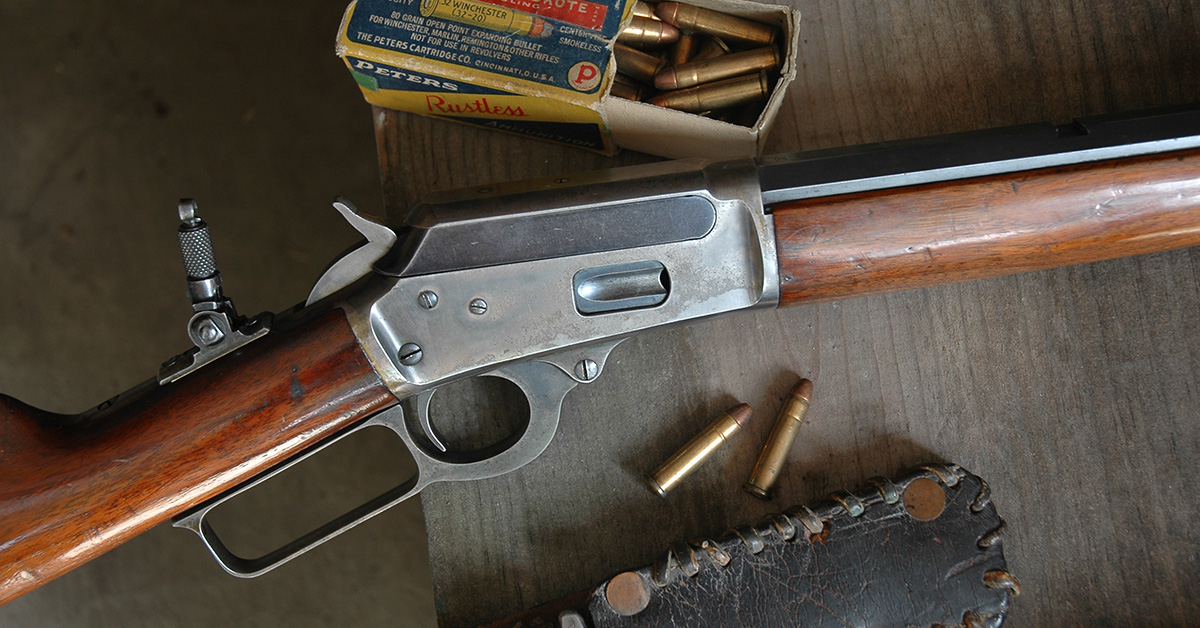
In 1850 Arrowsmith peddled the Hunt rifle, with Jennings’ patents, for $100,000 to hardware and railroad magnate Courtland Palmer, at whose bidding Horace Smith and Daniel Wesson gave the Rocket Ball a copper base with fulminate priming. In 1854, Palmer formed a partnership with his employees.
A year later, 40 investors bought out Smith, Wesson and Palmer to form the Volcanic Repeating Arms Company. Oliver Fisher Winchester became company director and moved Volcanic to New Haven, Connecticut. When sluggish sales sent the firm into receivership in 1857, Winchester bought all assets for $40,000, reorganized them as the New Haven Arms Company, and hired Benjamin Tyler Henry. In 1860, Henry received a patent for a lever-action rifle with an under-barrel tube magazine. Fueled by 28 grains of black powder, its rimfire cartridge nudged a 216-grain 44-caliber bullet along at 1,025 fps.
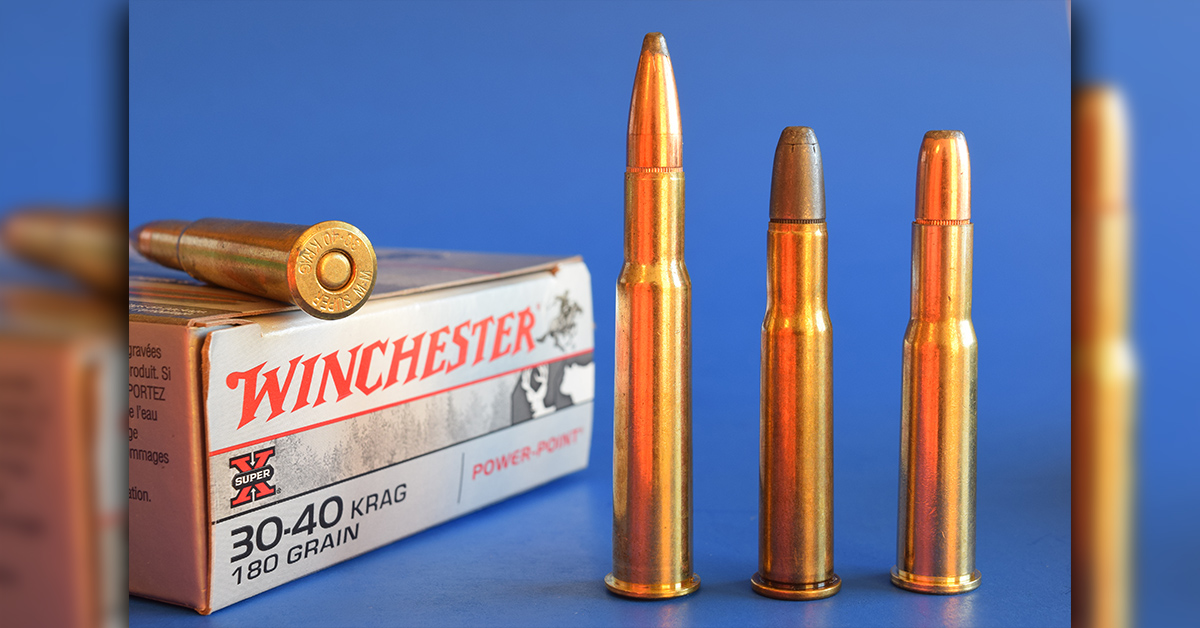
Subsequent lever rifles have dismissed the Henry’s profile at their peril. The hammerless, box-fed Winchester 88 (1955-73) and Sako Finnwolf (1962-74) were powerful and accurate but sold slowly. The Savage 99 had many fans, but after a century, became too costly to produce.
A new Henry Repeating Arms emerged in 1996, peddled its first .22 the next year and has since prospered with affordable rifles of traditional lines, built in New Jersey and Wisconsin. You can dip your toe in lever-action waters without pilfering Junior’s college fund for a vintage Winchester.

Early lever rifles command steep prices because history looms large in the lever-action mystique. The brass-frame Henry begat Winchester’s 1866. Its successor, the 1873, was bored to .44 WCF (.44-40), Winchester’s first centerfire cartridge. In 1878, as ’73 rifles sold to the walls, Colt listed its Single-Action Army revolver in .44-40—a brilliant move that ensured success for both guns and the .44-40!

Well-tended Winchesters were reliable for the day. But William Wright’s hard-used .44, probably an 1873, jammed when his first bullet failed to stop a grizzly coming fast. Wright tossed the rifle, leaped into a freezing creek, and hid under the bank’s lip. When bone-biting chill drove him ashore, he found the bear dead, then pried the spent case from his rifle.
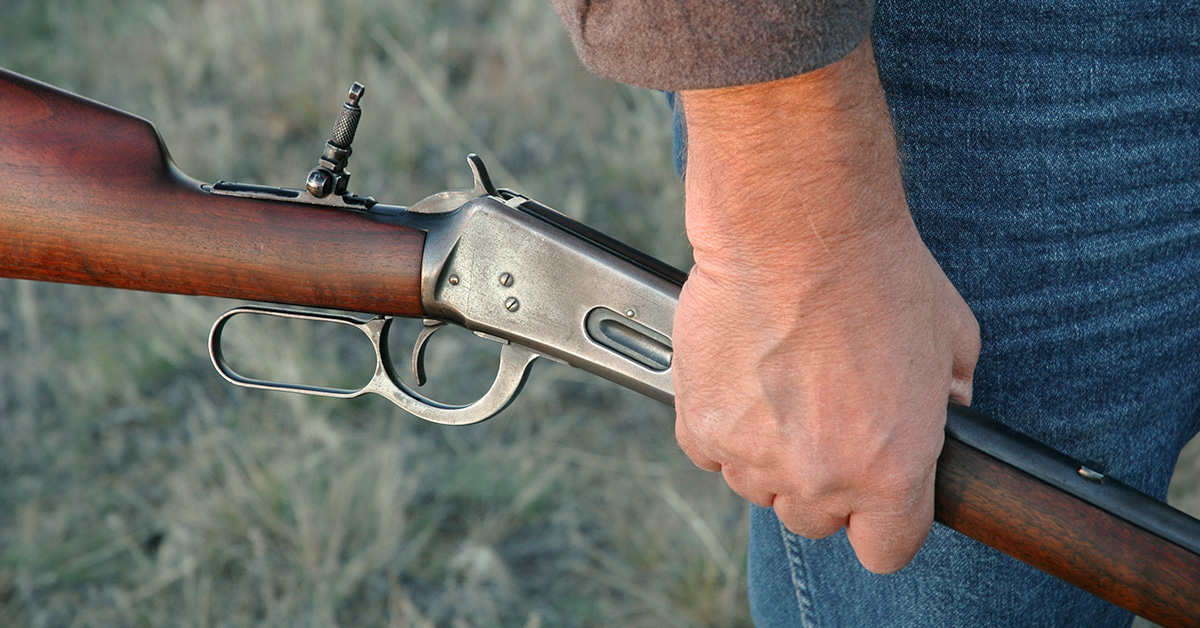
The Model 1876, Teddy Roosevelt’s first Winchester, was an up-sized 1873 for the .45-75 WCF. But the action wasn’t stout enough for the potent loads used by buffalo hunters in single-shot Sharps and Remington rifles. A single-shot of obscure origin drew Winchester president Thomas Bennett to a Utah gun-shop opened by the Browning brothers, barely out of their teens. Before enduring the six-day rail trip back to New Haven, he bought all rights to John Browning’s rifle. So began a 17-year union that brought Winchester more than 40 gun designs. The single-shot appeared as its Model 1885. John got $50,000 for his 1886—a strong lever rifle with the 1885’s vertical sliding lugs. Bennett offered Browning $10,000 for a short-action version “if it’s ready in three months.” Browning countered at $20,000. “You’ll have it in 30 days or it’s free.” The Model 1892 cost Bennett 20 grand. Until 1900, Winchester bought all John’s designs to keep his genius in-house. Browning birthed Winchester’s 1894, the “deer rifle” of generations, also the box-fed 1895.

Meanwhile, John Mahlon Marlin fashioned rifles to compete. His first lever gun, the Model 1881 in .40-60 and .45-70, spawned the short-action 1888 refined by L.L. Hepburn, then the side-ejecting 1889. Hepburn’s 1893 cycled the .32-40, .38-55, .25-36, .30-30, and .32 Special. The success of these cartridges in whitetail cover earned Marlins (and other lever-actions) the sobriquet, “woods rifles.”

Bolt-actions arrived with our first smokeless cartridge, the .30-40 Krag. The U.S. Army adopted the Krag-Jorgensen rifle in 1892. The 1903 Springfield replaced it. Lever rifles remained popular with hunters, however, even as the .30-06 came to define an all-around big game cartridge. Friskier lever-rifle rounds appeared—the .300 Savage in 1920, the .348 Winchester in 1935, the .308 and .358 in 1955. Still, the .30-30, .32 Special, and .35 Remington filled countless freezers. When Winchester’s New Haven plant shuttered in March, 2006, it had shipped more than seven million 94s!
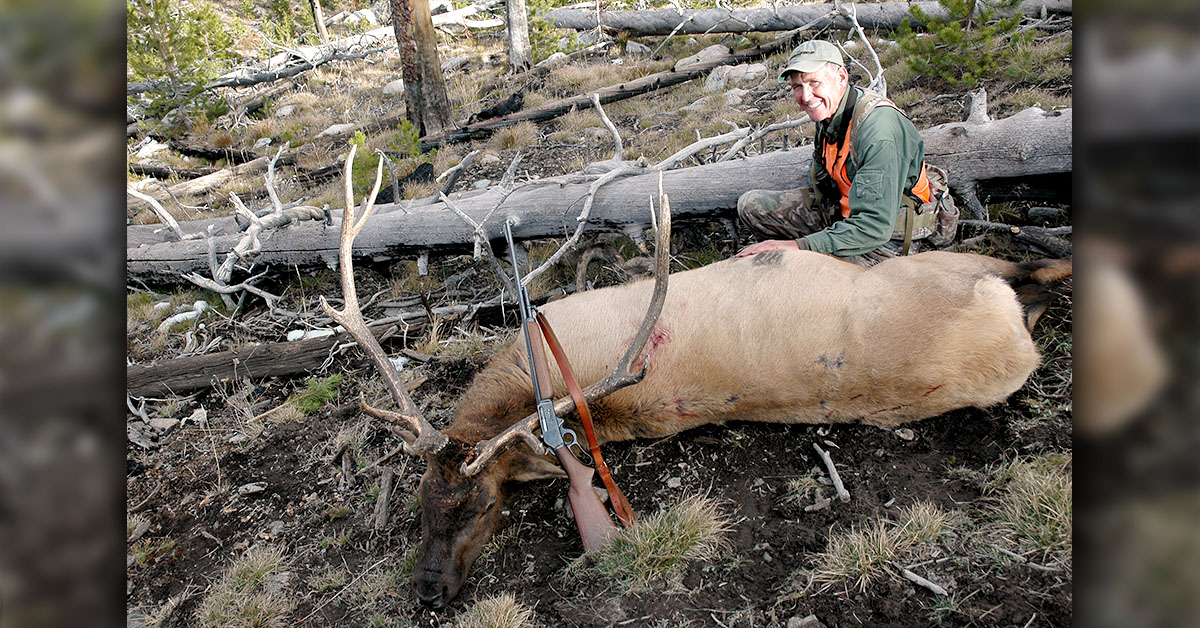
Side-ejecting Marlin rifles found increasing favor as scopes became popular. The 1893 evolved into the 336 in 1948. The short-action 1894 returned after Marlin moved to North Haven, Connecticut in 1969. A revived 1895 for the .45-70 followed. Remington Arms bought Marlin late in 2007, and in 2010 moved its production to Ilion, New York. Marlin Custom Shop rifles were assigned to the Dakota Arms crew in Sturgis, South Dakota. Short months ago, as Remington Arms was pieced out to other companies, the Marlin brand went to Sturm, Ruger.
Lever guns remain practical for hunters. They slip easily into saddle scabbards. Their lively feel and fast cycling doom deer. But they’re no longer just “woods rifles.”
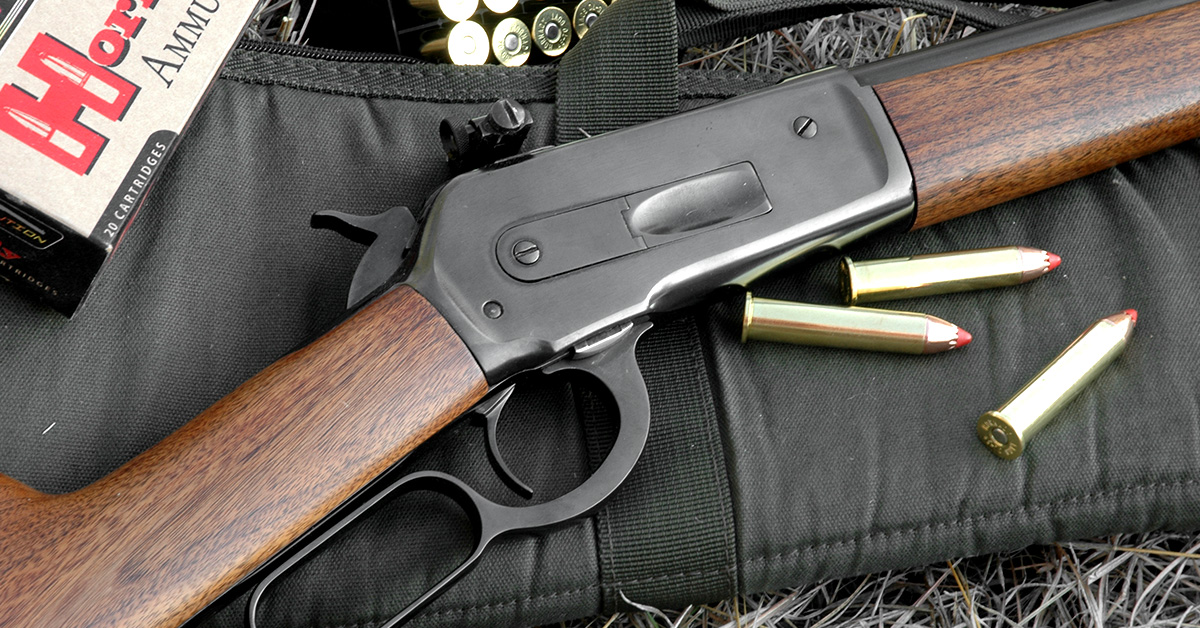
In 2005, Hornady LeverEvolution ammo gave traditional rounds greater reach with pointed bullets bearing resilient polymer tips that are safe nosing primers in tube magazines. Booted by proprietary powders, LeverEvolution FTX bullets fly flatter and retain speed and energy much better than flat-points. At 250 yards, a 160-grain .30-30 FTX hits half again as hard! An FTX from an iron-sighted Marlin in .32 Special gave me a bull elk at 130 yards. LeverEvolution loads can wring 2-minute accuracy—and better! —from aging rifles.
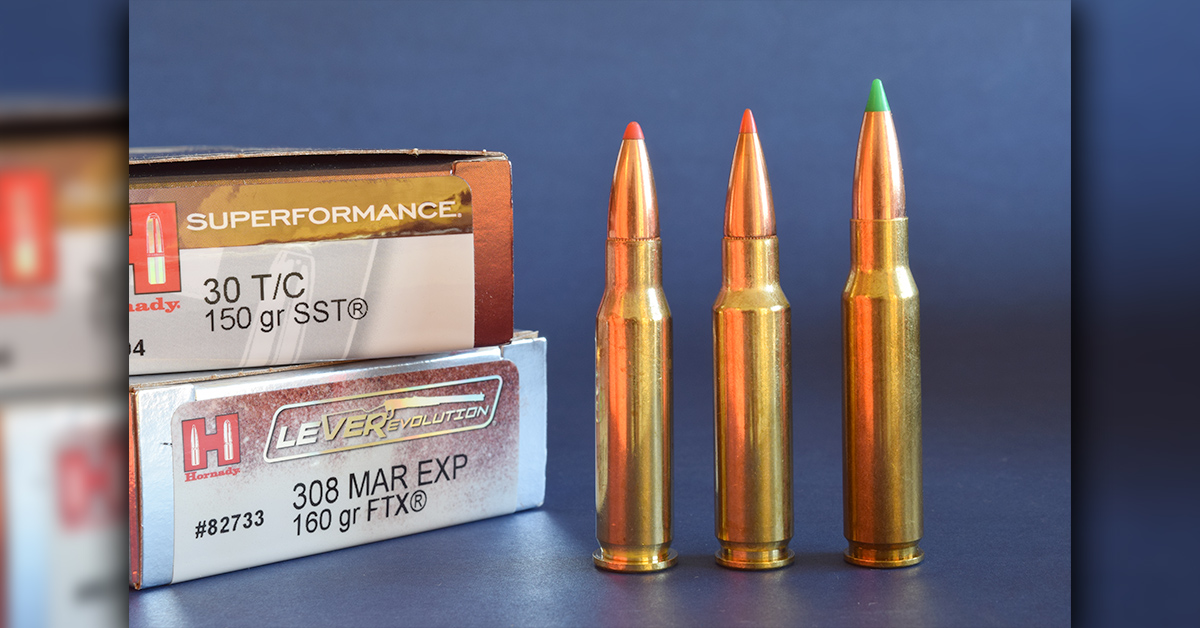
Current lever actions brook pressures that once tested bolt actions. Potent new cartridges like the .444 and .450 Marlin, the .308 and .338 Marlin Express, suit lever rifles for tough North American game. They punch far, accurately. A 160-grain Hornady FTX bullet from the .308 ME clocks over 2,000 fps at 300 yards, where it packs 1,450 foot-pounds. Prone, with a sling on a Marlin in .338 ME topped by a GreyBull/Leupold scope, I fired at a 12-inch target at 100, 200, 300, 400, 500 and 600 yards, one shot apiece. All hit.
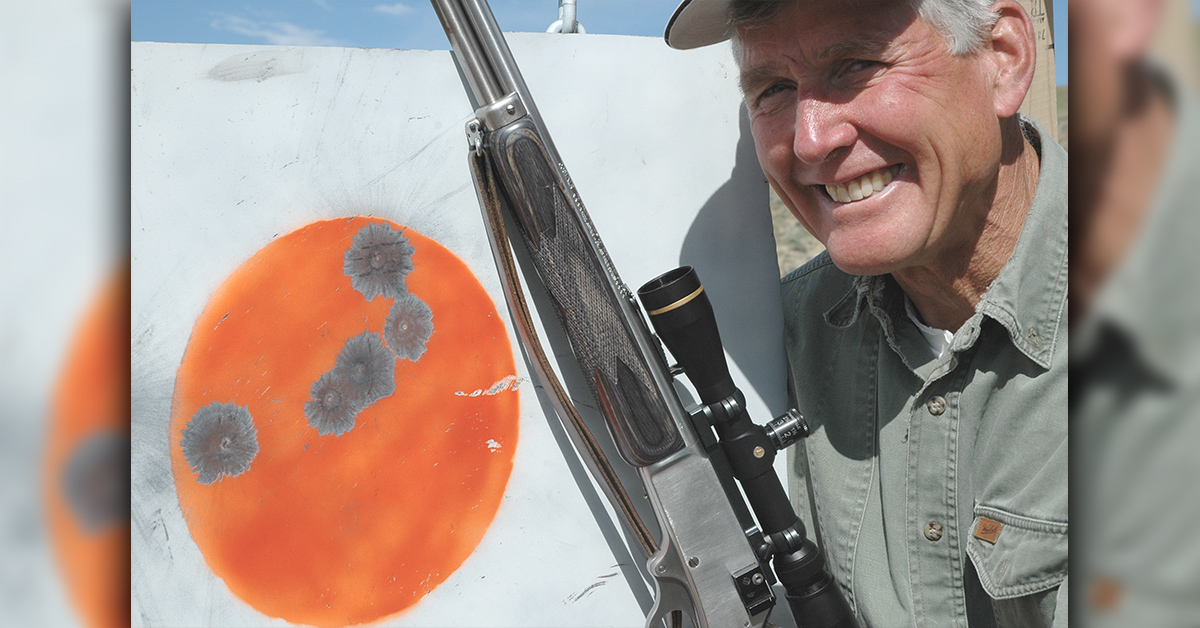
Even if lever rifles weren’t as powerful and accurate as new loads have made them, at least one belongs in your rack. It’s a link to our frontier West, to a brief but formative slice of hunting history. I’ve joined Inuits stalking seals with rusted lever-actions on Arctic ice, seen professional hunters jump at the chance to use them on African game. What do they know that escapes bolt-rifle shooters stateside?
